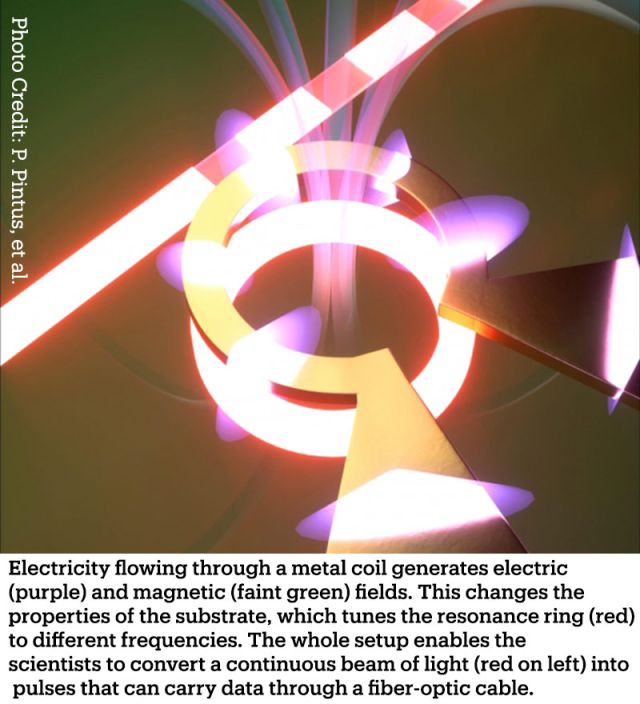Pintus & Bowers "The Magneto-Optic Modulator"
An international team of researchers led by ECE project scientist Paolo Pintus and ECE Professor John Bowers create a device to streamline interactions between ultra-cold and room-temperature computers

Excerpt from The UCSB Current article "The Magneto-Optic Modulator"
Many state-of-the-art technologies work at incredibly low temperatures. Superconducting microprocessors and quantum computers promise to revolutionize computation, but scientists need to keep them just above absolute zero (-459.67° Fahrenheit) to protect their delicate states. Still, ultra-cold components have to interface with room temperature systems, providing both a challenge and an opportunity for engineers.
An international team of scientists, led by UC Santa Barbara’s Paolo Pintus, has designed a device to help cryogenic computers talk with their fair-weather counterparts. The mechanism uses a magnetic field to convert data from electrical current to pulses of light. The light can then travel via fiber-optic cables, which can transmit more information than regular electrical cables while minimizing the heat that leaks into the cryogenic system. The team’s results appear in the journal Nature Electronics.
“A device like this could enable seamless integration with cutting-edge technologies based on superconductors, for example,” said Pintus, a project scientist in UC Santa Barbara’s Optoelectronics Research Group. Superconductors can carry electrical current without any energy loss, but typically require temperatures below -450° Fahrenheit to work properly.
Right now, cryogenic systems use standard metal wires to connect with room-temperature electronics. Unfortunately, these wires transfer heat into the cold circuits and can only transmit a small amount of data at a time.
Pintus and his collaborators wanted to address both these issues at once. “The solution is using light in an optical fiber to transfer information instead of using electrons in a metal cable,” he said.
Fiber optics are standard in modern telecommunications. These thin glass cables carry information as pulses of light far faster than metal wires can carry electrical charges. As a result, fiberoptic cables can relay 1,000 times more data than conventional wires over the same time span. And glass is a good insulator, meaning it will transfer far less heat to the cryogenic components than a metal wire.
However, using fiber optics requires an extra step: converting data from electrical signals into optical signals using a modulator. This is a routine process at ambient conditions, but becomes a bit tricky at cryogenic temperatures.
The UCSB Current "The Magneto-Optic Modulator" (full article)